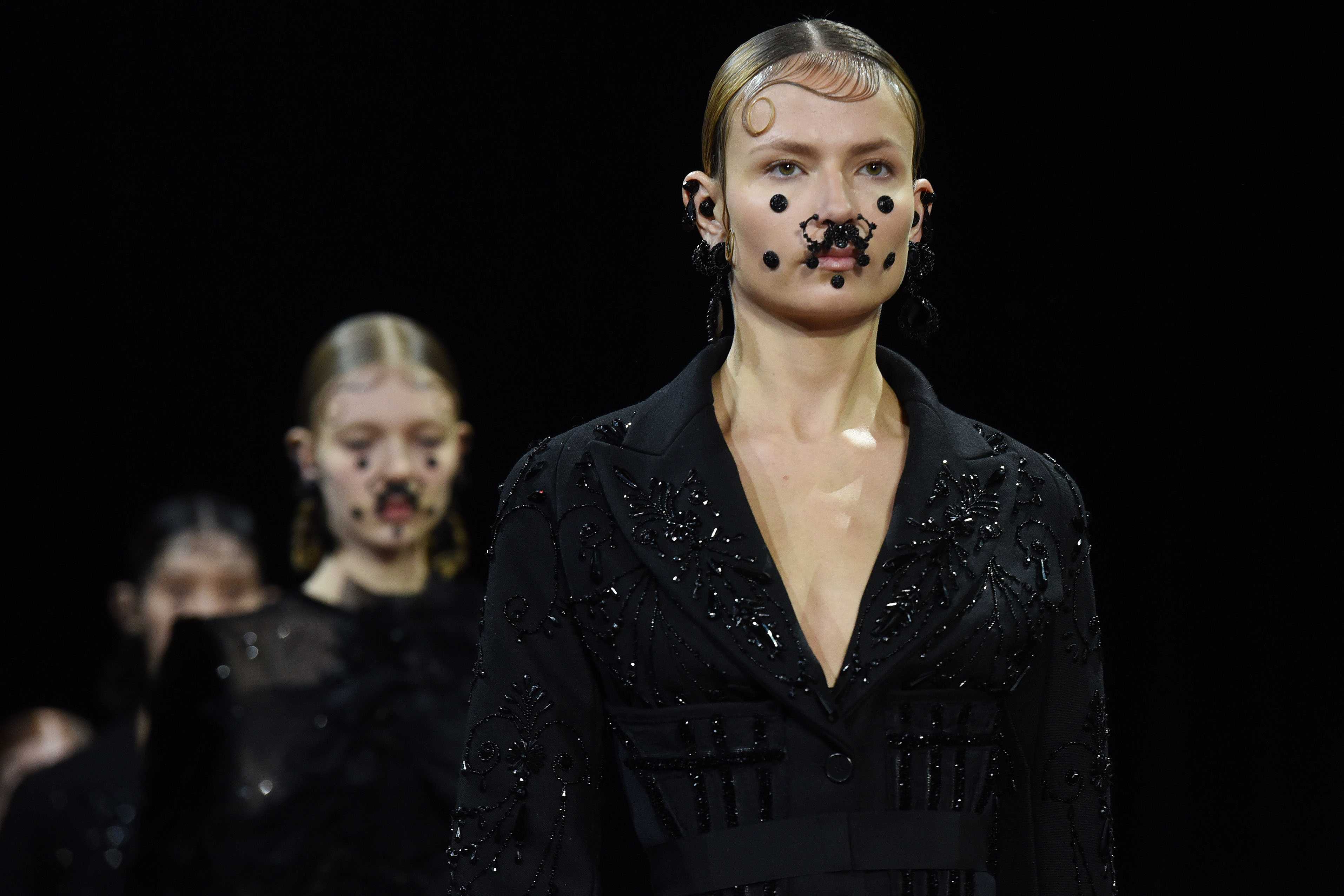The fashion industry is no stranger to controversial expression, shocking stunts or cultural appropriation. The most recent cultural appropriation offender is Givenchy designer Riccardo Tisci, who called his Fall 2015 show “Chola Victorian” and declared the Givenchy girl of the season as the “boss of the gang.”
The Givenchy fashion show at Paris Fashion Week featured dual themes – the Victorian aesthetic and the Mexican and Puerto Rican chola. The word “chola” has its origins in the Aztec word for dog or mutt and is typically used to describe Mexican immigrants and gangsters in a derogatory manner, according to the Huffington Post last week.
In the 1960s, the working-class Mexican-Americans reclaimed the term as a means of empowerment, according to the Guardian in 2013. They seized and embraced the disparaging term and turned it into a word of power. Cholas identified themselves with aggressive facial piercings, sharply penciled eyebrows, dark lip-liners and slicked back hair adorned with swirls of baby curls.
Inspired by these women, Tisci clothed the models in Victorian ensembles finished with gelled baby hairs, intricate braids, and oversized facial jewelry. He paired the high pretension of Victorian style with the tough aesthetic of the cholas.
“The cholas are very Latin, and very stylish, which I love,” Tisci said, according to the Financial Times last week. “And Victoriana is an obsession which I have had since childhood but was afraid to explore until now.”
Cultural appropriation happens when members of a dominant group exploit the culture of less privileged groups – typically with little to no understanding of the minority group’s history, experience and traditions.
Givenchy’s use of cultural appropriation is particularly problematic because of the lack of diversity among the models he used. They were predominantly white.
While originally inspired by the Latin American street culture and good intent, the designer’s means of paying tribute can come off as exploitative.
The models rocked facial jewels that matched their bejeweled septum piercings and earrings. Their hair was pulled back and braided with baby hairs swirling around the face à la British singer FKA Twigs, whose famous baby curls alluded to the chola aesthetic.
However, even Twigs admitted to phasing out the hairstyle, according to The Guardian.
“I used to really enjoy doing [my hair] every single day, even if I was late I’d squeeze in seven minutes to do [the curls],” Twigs said, according to the Guardian last year. “But since I did the i-D cover, [chola style] has really taken over in fashion and music … I think the way it’s taken now, I’m not really down with it.”
The use of the chola style as an inspiration while ignoring the women who come from that culture is an act of cultural appropriation. It isn’t paying tribute if you don’t include and praise the women you were inspired by.
“The message this sends, even though it is hopefully inadvertent, is that baby hairs can look ‘chic’ on white girls, but are still ‘hood’ on Latina and Black girls,” according to fashion site Refinery 29 last week.
Fashion has always intended to push the boundaries. There is a need and desire for shock value in the fashion industry to constantly keep people surprised and intrigued. The Zoolander stunt at Valentino sparked hype for the upcoming movie release next year, Alexander Wang challenged fashion week goers to cross the bridge to Brooklyn for New York Fashion Week 2014 and Rick Owens provoked questions of male objectification with his peep-hole fashion, which revealed his models’ penises.
Despite the rather common stunts and surprises pulled during fashion week, cultural appropriation is never okay, and it has affected every minority culture.
For example, the Native American headdresses, typically reserved for highly honored chiefs and warriors, have been disrespectfully used time after time. Pharrell Williams wore the headdress on the cover of Elle UK, and Gwen Stefani wore it in No Doubt’s “Looking Hot” music video.
In another example, Katy Perry appropriated Chinese and Japanese culture in her geisha-inspired 2013 American Music Awards performance, which incorrectly blended two Asian cultures with Japanese cherry blossoms – a Chinese fan dance performed by non-Asian dancers in kimonos, and Perry’s geisha costume which was actually a combination of a Japanese kimono and a Chinese cheongsam.
Designers and celebrities need to correctly pay tribute to the cultures that they use as inspiration. As public figures and trendsetters, fashion designers must take care not to misinform the public who look up to them.
Sources –
http://www.theguardian.com/fashion/2014/aug/15/-sp-chola-style-cultural-appropriation-fashion-crime
http://www.huffingtonpost.ca/2015/03/10/givenchy-chola_n_6838656.html
http://www.refinery29.com/2015/03/83536/givenchy-fall-2015-runway-chola-inspiration




